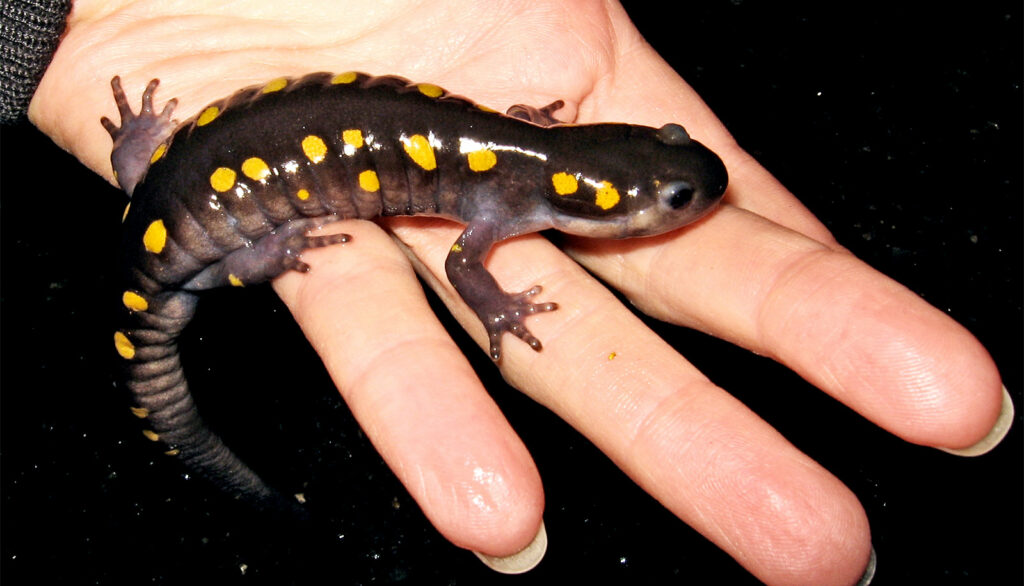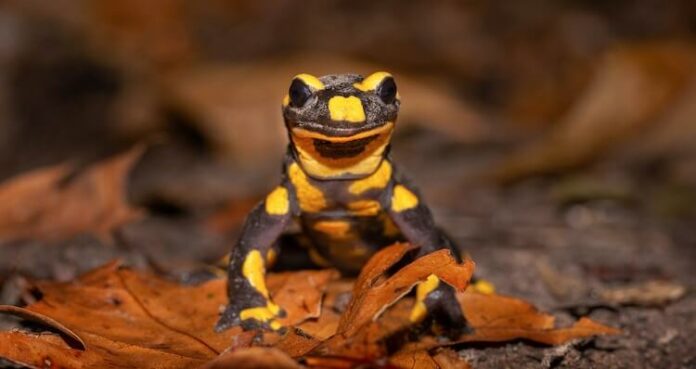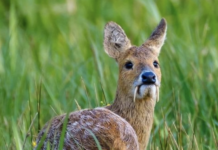What do Salamanders eat – It has become a trend nowadays to have exotic and different types of pets at their home. And among those pets, people are often considering adopting a pet salamander. So if you also are looking forward to having a pet salamander, you must have basic guidance and tips about what to feed them. Having a pet salamander is relatively easy if you have the right knowledge to keep them. If you want to learn what do Salamanders eat, then keep scrolling down.
What do Salamanders Eat?
Now the salamander diet mostly depends on the type of pet you have. Like there are two types of salamander, terrestrial salamander and aquatic salamander, the diets of which differ from each other. Scroll down to know more:
Terrestrial Salamanders
To cover up their nutritional needs, land or terrestrial salamanders eat the worms and other bugs easily available around them. So if you have decided to adopt one as a pet, ensure they are provided all kinds of worms, like earthworms, mealworms, and crickets.
Aquatic or Marine Salamanders
Just like land salamanders fulfill their nutritional benefits from around their natural habitat, Aquatic salamanders eat the small marine organisms around their habitat. They mostly eat crayfish, minnows, and shrimp. And for a per aquatic salamander, you can opt for marine organisms like minnows or shrimps.
How to give food to your Pet Salamander?
Salamanders were not evolved as a pet, and by being a creature of wilderness, they have developed a preference for eating live bugs and animals. So to cope with your pet’s habit, it’s better to look out for a shop that provides live bugs for consumption.
Moreover, if you have a fishing supply store nearby, you can find live bait used for fishing for your pet salamander. But be careful since some stores and brands use artificial attractants on their fishing baits.
READ MORE – Know Everything About Fish Eating Birds
How to Prepare the Salamander Food?
Most worms fed to pet animals are not up to the full mark of what your pet needs. So to ensure you give your pet the best, you need to do a process called Gut-Loading. It involves feeding the worms for a certain number of days so that your pet gets all the necessary nutrients.
What is the right amount of Salamander food, and Frequency?
To ensure that your pet stays healthy and doesn’t overfeed itself, you must contact your local exotic vet to understand your pet’s basic needs. Also, one of the few things you must keep in mind is that due to their evolution in the wild, where they don’t eat regularly, you must follow the same routine where they must only be fed at night and only two or three times a week.
Do’s and Don’ts of Salamander Food:
Salamanders come from the wild, and we as pet owners must respect that nature and keep some boundaries regarding their health. To begin with, we must never feed them food from our kitchen. They have not evolved to consume dairy or fruits. They shouldn’t be given anything that isn’t available to them in their natural habitat.
Basic cleaning of the place they live must also be done regularly. Never leave uneaten insects or worms in their habitat, as those worms may attack your pet. Similarly, aquatic salamanders their water tank must be cleaned regularly as it may lead to water contamination.
According to Vets, there is a list of insects you may never feed your salamander :
- Centipedes
- Millipedes
- Spiders
- Ticks
OTC medicines and Supplements for your Salamanders:
Like humans, salamanders don’t get enough nutrients just from the food, so you must resort to some basic OTC multivitamins. To give them the supplement, coat the medicine on your Salamander diet. Also, check that these supplements don’t contain Vitamin D3 since Vitamin D3 is toxic to salamanders.
How to Hydrate Your Pet Salamander?
Terrestrial salamanders, unlike other organisms, don’t dwell up water from their mouth; they soak up water from their skin and are usually found near a water body in their habitat, like near a water ball. So timely watering of their body to keep them moist is recommended.
Complications while Feeding a Salamander:
Salamanders can sometimes be difficult to be taken care of due to their reserved nature. However, it is easy to feed a salamander and look after him; if you encounter any unusual behavior and avoid food, you must try to feed them yourself. This task must be done patiently as you must first gain its trust.
Complications with a pet Baby Salamander Diet:
It is generally much easier to take care of a baby salamander because they usually consume their shell once they hatch, which keeps them full for at least a week. It is when they grow up to become adults they show their tantrums. While they are still babies must be kept under the diet of small organisms and strictly under the guidance of your local vet.

Conclusion:
It is highly recommended to get your pet salamander from a certified breeder, and while getting the pet, consult and go through the details of the food they have been giving your pet. So that it will be easy for your pet to get used to the new home. Knowing what do salamanders eat is highly essential, so your pet is healthy and growing normally.
READ MORE –Top Benefits of Pet Supplements
Frequently Asked Questions (FAQs):
What do Salamanders eat?
Any salamander, Aquatic or Terrestrial, fulfill its nutrition needs by consuming worms and insects.
What is Salamander’s favorite food?
A salamander diet includes worms and insects. And they happily eat Mysis, buffalo worms, cricket, and larvae.
Are Salamanders good pets?
Anyone looking to own an exotic pet with minimum care may go for a salamander. However, they still require timely feeding and cleaning; overall, they make good house pets.
READ MORE – Top Ten Low-Maintenance Pets for Adults or Kids

















